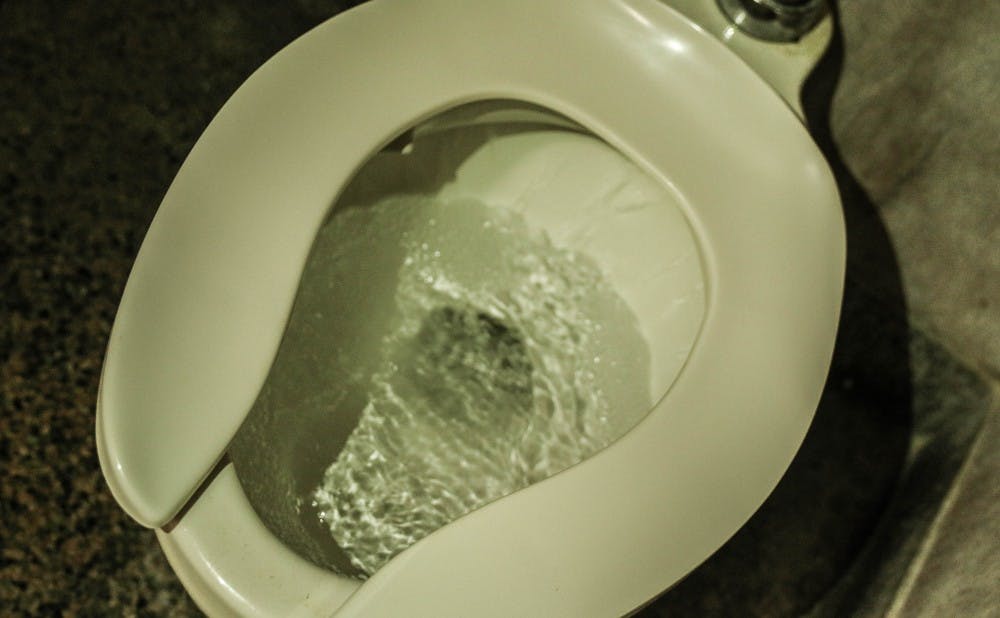Jesus may have turned water to wine, but two Duke professors are turning poop to water.
A new Duke-developed reactor can convert organic waste to clean water within four seconds, possibly changing the way waste is handled globally.
Marc Deshusses, professor of civil and environmental engineering, and Kobe Nagar, senior process engineer in the Deshusses lab in the Pratt School of Engineering, have been working on inventing and perfecting this technology since 2013. They have high hopes for its potential implications and benefits.
“Poop is the new gold. That's what people are starting to realize,” Nagar said. “And sometimes you need to leap for the industry to follow—that's what we're promoting.”
He explained that the reactor—designed to treat waste from 1,000 people—utilizes a cycle called supercritical water oxidation (SCWO). Once the organic waste is fed into the reactor, the temperature and pressure are both increased. Under such conditions, the organic material is converted to clean water.
“Once you get to those conditions, you can react any organic material and oxidize it with oxygen into water and [carbon dioxide],” Nagar explained.
This technology has existed for some time, but there were problems keeping the reactors from charring and corroding. Deshusses and Nagar focused on solving these issues, and through gaining more experience, improved their design and methodology even further.
“We said, 'How can we innovate, where can we solve those problems and get around the traditional fault [older technologies] had?'” Nagar said.
The project began in 2013 as part of the “Reinventing the Toilet” challenge sponsored by the Bill and Melinda Gates Foundation. The objective was to look for new technology and innovations in the sanitation and wastewater industries.
The product is now in the fourth development phase of the grant—putting the machine on the market. The two scientists founded 374Water to commercialize the technology with a partner that will help engineer, manufacture and operate the units. Nagar explained that they hope to get two demo units into the market by 2020.
Nagar noted that he and Deshusses began the project in order to solve water availability and sanitation issues in the developing world.
“The developing world doesn’t have the infrastructure that we have," he said. "They don’t have a sewer system, they don’t have a collection, and you need to allocate a lot of money just for that infrastructure, not to mention for treating the material."
In developing nations without existing infrastructure, Nagar explained, it's possible to implement technology that replaces the need for that infrastructure. For example, the landline infrastructure—which was massive, costly and lacking in developing countries—was essentially “leapt over” with the introduction of cell phones, he said.
Similarly, instead of building massive, costly sanitation infrastructures in developing nations, the SCWO technology “leaps” over the issue and solves the problem locally.
However, as they went along, Nagar and Deshusses quickly saw potential for their technology in the developed world as well.
“In the developed world, we have the most sophisticated wastewater methods but still end up with some residue, the concentrated biosolids,” Nagar said. “Usually, this residue either goes into a landfill in most cases or is applied on crops. But the challenge with that is those biosolids contain a lot of contaminants, like pathogens and non-biodegradable materials like pharmaceuticals, microplastics, etc.”
Municipalities pay hefty amounts just to transport these biosolids. Nagar pointed out that New York City has to transport their waste to Alabama because no one closer will take it. Transportation not only incurs significant energy and financial costs, but it also increases greenhouse emissions.
Furthermore, the wastewater industry is extremely space intensive compared to a SWCO reactor.
“The traditional method takes about 3.5 acres to treat waste from 1,000 people," Nagar said. "We can do the same with a 20-foot container, so this is three order of magnitude smaller footprint than what’s currently done."
Thus, instead of using costly, energy-inefficient, off-site biological treatment that will leave some residue to be disposed in landfills, this technology can solve those problems on-site and generate clean, reusable water. Nagar added the whole process costs five cents per person per day, less than what it costs a traditional waste water treatment plant.
Get The Chronicle straight to your inbox
Signup for our weekly newsletter. Cancel at any time.

Mona Tong is a Trinity senior and director of diversity, equity and inclusion analytics for The Chronicle's 117th volume. She was previously news editor for Volume 116.

